Supply Chain Management Notes Pdf Download
Globalization has become an undeniable part of commerce over the last few decades, as large companies have grown first to source labor and parts from developing regions, and then to start selling in those same areas as they grew in wealth and buying power. Supply chains have had to keep in step, passing through numerous countries to obtain goods most efficiently and cost effectively, and growing more complex as a result. And on the other end, the supply chain grows more frayed in order to deliver to countless countries for consumption. For the largest companies, managing a supply chain can require dedicated teams in every area the chain touches. It's safe to say that supply chain management is both an art and a science.
This article will cover what a supply chain is, with examples; discuss how supply chain management works and its principles; and vital concepts in the field. Then we'll move on to current issues and where the field is going. Finally, you'll find useful resources, templates, and education programs. Ready? Let's get started.
What Is a Supply Chain?
A supply chain is a collection of suppliers required to create one specific product for a company. The chain is made up of nodes or "links," which can include multiple manufacturers for parts, then the completed product, then the warehouse where it is stored, then its distribution centers, and finally, the store where a consumer can purchase it. The concept of the chain is important, because each link is connected in a specific direction and order, and the next link cannot be reached without going through the previous one. Each link adds time and costs, and can involve labor, parts, and transportation. Every product a company carries may have its own supply chain, though they may use certain suppliers for multiple products. You can see why this gets so complicated, especially for international supply chains.
The process described above was that of a typical retail supply chain. However, there are many different types in practice. Here are three examples from well-known masters of supply chains:
Example: Walmart and "Big Box" Retailers
The "Big Box" store, which represents one of the major disruptions of the retail model from the last century, thrives on size, ubiquity, and well-planned supply chains to drive out the competition. How else would a company like Walmart make a profit on a t-shirt made overseas that retails for $5.00?
Walmart succeeds by having fewer links in its supply chain, and buying more generic goods directly from manufacturers, rather than from suppliers with brand names and markup. It uses "Vendor Managed Inventory" to mandate that manufacturers are responsible for managing products in warehouses owned by Walmart. The company is also is particularly choosy with suppliers, partnering only with those who can meet the quantity and frequency it demands with low prices, and with locations that limit transportation needs. They manage their supply chain like one firm, with all partners operating on the same communication network.
By buying at large enough quantities to take advantage of economies of scale, moving products directly from manufacturers to warehouses, and then delivering to stores which are large enough to be distribution centers, it reduces links in the supply chain and cost per item, translating to low prices for consumers.

Example: Amazon and "Ecommerce Platforms"
Having overtaken Walmart as the world's largest retailer in the last decade, Amazon's "online big box" concept is a perfect example of unique supply chains. As an e-commerce shop, obviously they cut the retail store out and ship from distribution center to consumer's homes directly. Where Amazon innovates is both in its supplier-side and its final supply chain link - delivery.
Just about anyone can sell things on Amazon because it's a platform, not just a shop. As a result, Amazon has more things than any other online store, so when people shop online, they think of Amazon. Then, it produces everyday goods cheaply, and underbids suppliers. Next, their warehouses make serious use of automation to store items going to like destinations together, ready for immediate transport. Finally, its investments in delivery staff and technology make 2-day shipping a basic expectation, and even same-day delivery a possibility. Amazon ditches third-party logistics (3PL) and fulfills orders itself.

Example: Tesla and Specialized, Owned Chains
Automotive manufacturing has come a long way since Henry Ford used assembly line manufacturing to speed up the production of a single car model in a single color. Now, in a time when even American carmakers are opening factories abroad, Tesla is making innovative, incredibly popular, and luxurious cars right in California, a location with incredibly costly real estate.
Rather than having a long supply chain of cheap part makers, they have a vertically integrated supply chain, with a full-service auto plant near its corporate headquarters and plans for a supplier park and a massive battery factory, and Tesla owns it all. Even more interesting is the digital supply chain the company promotes - new firmware and algorithm updates are pushed out to existing car owners over the cloud.
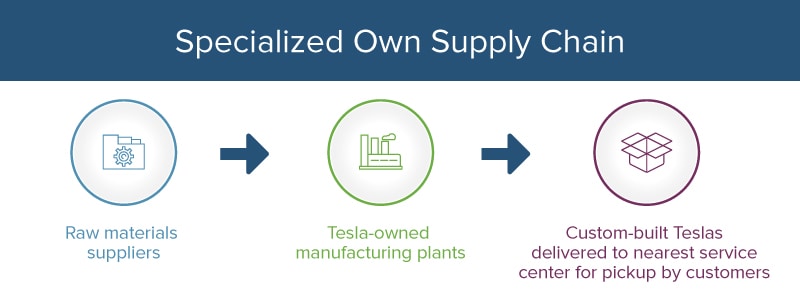
See how Smartsheet can help you be more effective
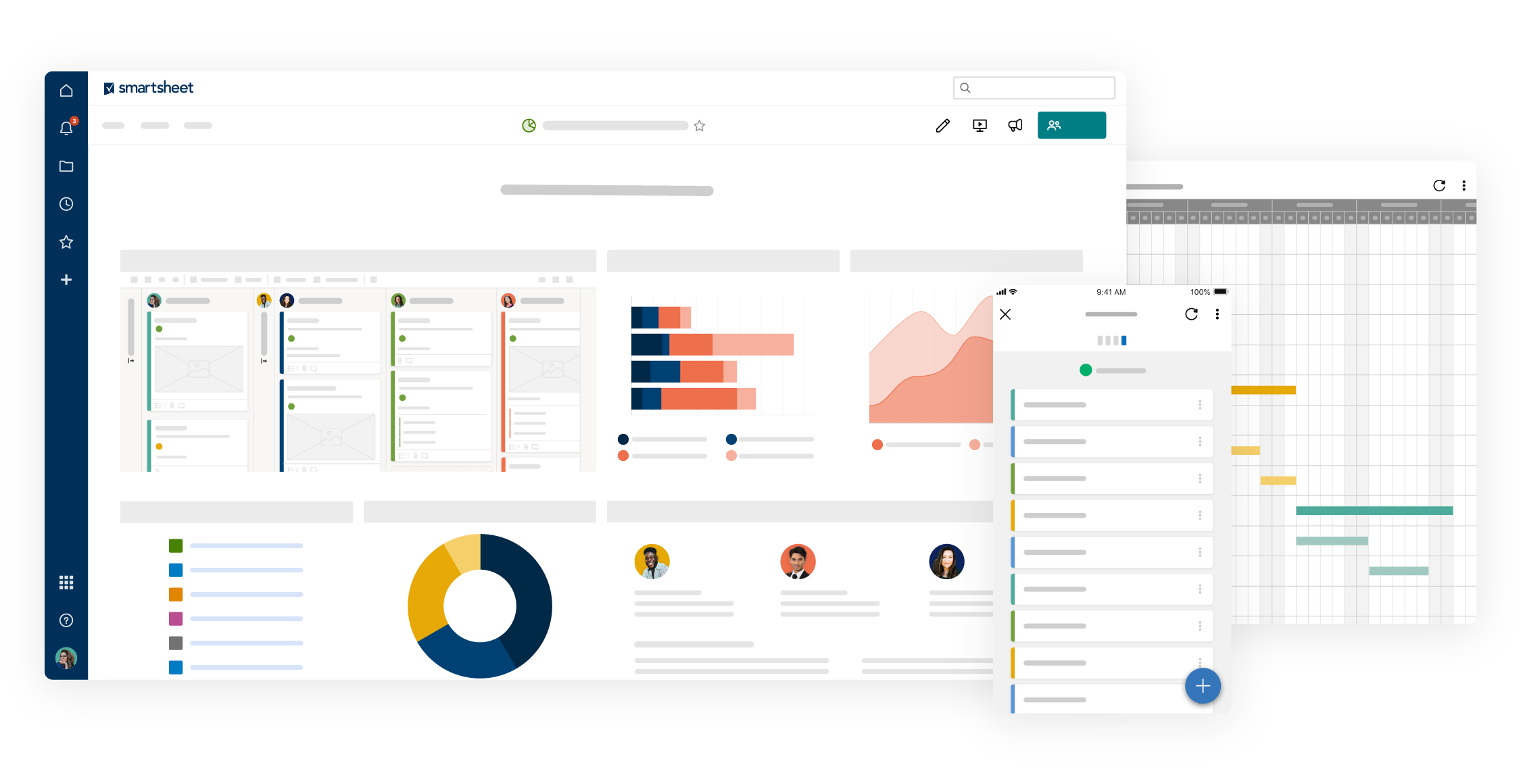
Watch the demo to see how you can more effectively manage your team, projects, and processes with real-time work management in Smartsheet.
Watch a free demo
What Is Supply Chain Management?
As the name implies, supply chain management (SCM) is handling and optimizing all the many complicated facets of a supply chain, involving goods and services. Even ensuring timely handoff from manufacturer to shipper to supplier to shipper to buyer is a massive task, but to do it cost effectively and build net value is truly a challenge.
Supply chain management is so important because modern commerce exists in a networked global economy. Most businesses are specialized - even department and big box stores are only really equipped to sell to customers, despite their wide variety of products. The value of vertical integration is hard to justify when communication costs and SCM tools are so inexpensive - it almost always makes more sense to outsource for price efficiency.
History
The concept of supply chain management was in effect long before the term was created in 1982. In the colonial era, international trade by ship was already making for complicated transportation issues and the need for efficiency. During the Industrial Revolution, the ability to quickly produce goods with machine assistance led to the need to manage significant inventory and constant consumption. By the time history arrives at Henry Ford's famous assembly line for the world's first car production in 1913, supply chain management had become an art.
As the century wore on, more companies were producing more goods and looking for ways to reduce costs. They vertically integrated into owned supply chains to try reducing costs at each stage. In the 1980s and on, globalization became a realistic dream for many companies, because of computer systems, easier communication, and commerce-friendly trade laws. Around the 1990s, it became a common practice for firms to specialize, and focus on core competencies and outsourcing the rest, abandoning the vertical integration of the previous era. At this point, supply chains became truly complex, in order to coordinate hundreds of otherwise unrelated and geographically-distant manufacturers, suppliers, shippers, warehousers, and retailers.
Now, in the "SCM 2.0" era, the Internet and new methodologies have led to collaborative platforms and democratized processes. This is allowing smaller competitors to use some of the same manufacturers as major players, and reducing inefficiencies for those manufacturers as a result. Better communication and planning tools are providing a way for small and large companies alike to manage even more complex supply chains.
Variants of SCM
Global SCM: The combination of global manufacturing with supply chain management, which must account for tariffs and local taxes as goods and services travel internationally to ultimately provide greater value at the end of the chain.
SAP SCM: Systems, Applications, and Products (SAP) is a software company that revolutionized logistics and enterprise resource planning. It provides an automated way to manage supply chain networking, supply chain planning, and supply chain execution, along with production planning, business forecasting, and demand planning.
Logistics and SCM: The art of coordinating efforts between every member of the supply chain to get products from their source to the consumer.
Purchasing and SCM: The focus on the monetary aspect of SCM, from costs to value added at each link in the supply chain.
Principles of Good Supply Chain Strategy
The Basics of Supply Chain Management Processes
There are key supply chain processes that you must take into consideration to effectively understand and manage them. These processes are all at play regardless of the type of supply chain you're using.
Customer relationship management (CRM) comes first, because as the principles of SCM state, you must adapt everything in the supply chain to the customer. If no one is buying, there's no need to produce anything. At the front of your supply chain, where a store's staff interacts with its consumers, they must have plans in place for ongoing relationships. They need CRM tools to gather customer information for marketing and market research, all to determine the products and services to offer in the future.
Customer service management is another process that ties in, as it is where you gather negative and positive feedback to determine future needs.
Demand management is closely linked with the previous two, as it takes customer interactions and orders into account to determine the workload all the way up the supply chain. At its core, customers buying more means make more, and customers buying less means make less. Customer forecasting is an important task that analysts must perform well to determine the current demand and what it will be in the future, to prevent waste in the supply chain.
Product development is an important part of the supply chain that is informed by consumer demand. You must work with CRM and customer service data to determine what they want, which influences new products, product line extensions, and also what to stop making. You must integrate suppliers in this process because it affects cost, quality, and delivery time.
Supplier relationship management goes without saying - if you want to produce your products on time and on budget, you need a solid rapport with everyone you're outsourcing to in the chain. This impacts manufacturing flow management, which ensures everything gets where it needs to go without delay, and at the correct spec.
Order fulfilment involves coordinating with distribution centers and either retail locations or 3PL to get the product direct to consumers. You've now made it all the way back to the beginning of the cycle, and need to pay attention to new CRM and customer service data.
Returns management, also known as the "reverse supply chain," is a vital part of the flow of products that doesn't fit perfectly into the clean supply chain cycle. It involves picking up online orders from 3PL locations or from consumers' addresses and accepting returns at retail locations. Once these items are put back into inventory, they must be ready to get to a different customer while the product run is still live.
What Supply Chain Managers Look for When Managing Supplier Relationships
One of the most complex parts of SCM is handling all the other people in the supply chain. They have their own needs and motivations, and to keep them all happy and working together with partners they are only loosely affiliated with is a challenge - especially when trying to meet deadlines and turn a profit. The following are what managers should focus on most in such relationships:
Org Chart and Leadership Style: How is the supplier's organization set up? Is it a vertical or horizontal structure? Is the leadership strong and long lasting, or fickle and prone to change? You need to know who you'll be interfacing with, and who will be the next one in line should some shakeup occur. Business relationships are always between people, and don't always survive a reorg.
Management Style: How do the leaders at this supplier run their shop? Make sure it works with your crew. A micromanager at a relatively replaceable link in your supply chain will waste inordinate time, just as a hands-off manager at a vital link could result in sloppy delivery or substandard product quality.
Company Culture: Always important for working with suppliers, determine what kinds of people rise to the top, and how everyone acts when nobody's watching. If, for example, middle managers are constantly in fear for their jobs because of ruthless quarterly performance reviews, they may over-promise, make excuses, or otherwise be unstable work partners.
Product Flows: Once you know that you can work with the people, make sure their facilities are in order. Are they equipped for orders of the size and frequency you plan to make? How do they handle emergency, fast-turn around orders? What about other customers - are they only able to use their facilities for your product flows at certain portions of the month due to full inventory? Leave no stone unturned.
Information Flows: Just as vital is the ability to control information about the day-to-day flow of materials, and to communicate and coordinate long-term plans. Is the supplier up on their product details, inventory, and SKU organization? Is their security and encryption up to the standards of your company, and your industry? Big data is useless if the right people don't see it in time.
Rewards and Risks: Take into account opportunities and threats of working with this supplier. Maybe they're well-equipped to handle your exact product because they also work with your competitors. Perhaps they are new and establishing themselves, so offer a substantial discount, but may not be able to deliver on time? Do what's best for the company, and use risk assessment to keep your whole supply chain operable.
Vital Supply Chain Management Concepts to Know
Having a passing familiarity with the following terms will help you see just what kind of skillset and abilities will be required when working in supply chain management:
Border Adjustment Tax: Also known as a destination-based cash flow tax (DBCFT), it is a tax levied on imported goods which is important to know in global supply chains.
Customer Relationship Management: Also known as CRM, this concept refers to providing ongoing service to customers and collecting data about their likes and purchases. There are also CRM tools that help automate and record interactions with customers.
Cumulative Mean: A figure for knowing how much or how little to produce in advance, involving mean orders with all previous data treated as equally useful.
Demand Management: Understanding customer behavior and patterns to control how much is ordered and produced at each link in the supply chain, with the goal of eliminating wasted production.
Financial Flows: Credit terms, payment schedules, accounts payable and receivable, and other factors that you must monitor to determine if a supply chain is profitable or not.
Information Flows: Transmission of orders, delivery status, and other data that influence the supply chain's responsiveness to demand.
Integrated SCM: This is a method of SCM wherein all of the links are tightly integrated, operating almost as one company rather than a loose association of buyers and sellers.
Inventory Management: Monitoring and controlling orders, storage, and use of owned components to create the products your company sells.
Lean Six Sigma: A data-backed philosophy of continuous improvement that focuses on preventing defects and mistakes rather than discovering them later, which reduces waste and production time via standardization. Read Everything You Need to Know About Lean Six Sigma to learn more about this methodology.
Logistics: The physical movement of products from one link in the supply chain to the next, and the practice of improving their efficiency.
Make vs. Buy: A simple evaluation of whether it is more cost-effective and time-efficient to produce a required product with your company's existing resources, or to outsource the need.
New Product Development: The creation of new products both in response to and in anticipation of customer demand, using data gleaned from CRM and the whole supply chain. Read Innovation for Everyone: Everything You Need to Know About New Product Development to learn more about this process.
Operational Accounting: Accounting for a company that focuses on planning, directing, and controlling of daily activities by their costs and eliminating waste.
Physical Flows: The actual movement of parts and products throughout the supply chain, which the Logistics team must manage and analyze to keep going without pause.
Project Management: The process and tools involved in ensuring that a codified piece of work (project or product) gets done on time while keeping all contributors aware of their next step.
Reverse Supply Chain: Aftermarket customer service, which may involve accepting returns, refurbishing and discounting, or otherwise finding use for the reacquired inventory.
Risk Management: Identifying, evaluating, and then choosing which risks to address first, with the goal of reducing overall risk in a supply chain.
S&OP: Sales and Operations Planning is a management process that aligns its constituent parts to ensure that the organization is only focused on operations that improve sales. Learn more about S&OP here.
Strategic Sourcing: Formalizing a company's information gathering in order to use its purchasing power to take advantage of the best values in the marketplace of suppliers.
Theory of Constraints: A methodology that identifies the largest limiting factor in production, then finding a way to remove it to improve the efficiency of the entire production.
Current Issues in SCM
In addition to the major terms, it's important to keep aware of legal, political, and social events which affect supply chain management when seeking a career in the field. Here are some of the bigger issues of the day:
Dodd-Frank Decision: This was a 2010 law which included a clause on "Conflict Minerals." It requires companies to audit their supply chains in order to determine whether gold, tungsten, tantalum, and tin came from the Democratic Republic of the Congo, and report on their due diligence. It adds an extra layer of complexity and costs to SCM for those involved in chains with those minerals.
NGO Actions: Activist groups of all kinds work to end common practices within major companies' supply chains, such as sweatshop labor, or push consumers towards less complicated supply chains by encouraging them to support local businesses and farms.
SEC Regulations: Whereas NGO actions can force a company's hand for PR reasons or changing the marketplace of ideas, the Securities and Exchange Commission can slap that same company with fines, making company's quick to comply. Third-party audits of supply chains are an important part of keeping in step with these regulations.
SECH Ratings: This is a rating that involves economic, social, and environmental judgements to gauge a company's overall sustainability.
Transparency: Though protecting data is important, certain measures of transparency can improve company performance. Among consumer products, many younger, disruptive brands make their supply chain a selling point in marketing by being upfront about how and where they get their components, and where they make their products. The reasoning goes, if a company is hiding something, there must be an unethical component to it.
Sustainability Measures: As major companies and countries around the globe move towards sustainable production, all supply chains become impacted. Whether due to changing regulations or seeking good PR, many companies are working to reduce pollution and other issues in their chain.
The Future of Supply Chain Management
Aside from the issues of the day, it's also vital to see where the field is going. The future of SCM is bright, but certainly evolving. We asked a group of experts and innovators in supply chain management to discuss what they believe the future of SCM holds:
Over the next decade, we will see massive and disruptive forms of innovation both in terms of technology that expedites the speed at which customers receive their products (drone delivery) as well as technologies that drastically enhances the online shopping experience for customers, (virtual reality).
While these and other technologies no doubt have the opportunity to significantly change the landscape of online shopping and the supply chain, I expect we will see firms diverge on two different strategies. Some will rush to implement these costly new technologies in order to drive down the total time between an order being placed and last mile delivery, while other firms will stand by the current landscape (for most B2C online sellers) of product delivery in approximately two-days, acting cautiously, particularly in regards to the cost of these new technologies versus their impact on the overall value chain for consumers.
Certainly, there are niche industries where significant investments in drone delivery technology will provide a distinct competitive advantage, but I predict that for many B2C online sellers, the impact on the overall value chain of these new technologies will be misaligned with a consumer's perception of value, and therefore make the initial cost of these new technologies unjustified.
Embracing big data is an essential principle of modern SCM, specifically real-time data which has the potential to improve the efficiency of a supply chain and negate potential risks to strategy. We know that logistics optimization through technological innovations and data integration can make supply chains more efficient and more financially sound.
The future of the multi-modal SCM depends on successful integration with data and systems to achieve synchromodality. To achieve this, there needs to be a connection to all available transport modalities in the form of a real-time data flow. Once any issues with connectivity are addressed, a ranking system is required to consider a variety of variables such as dock schedules and material restrictions. Pricing data is another integral component.
The great advantage of a synchromodal platform is that it's informed by every available option and makes a selection based on key factors like speed requirements. There is still significant work to be done in terms of how best to access and integrate a supply chain partner's real-time data but, as these platforms are developed, we're likely to see faster order processing times for large shipments and systems which can help generate a better ROI. The way we understand it, SCM is changing because now an efficient supply chain can be a competitive asset as opposed to a cost center.
Probably the most dynamic link in the supply chain in recent years has been the "last mile": that movement of goods from a DC to a final destination in the home. E-commerce king Amazon has done much to challenge and ultimately rewrite the rules of last mile delivery. Last mile delivery has also produced a new warehousing subsector: the locker. Studies show that online shoppers not only want their packages now, they also want their packages delivered to places other than their homes. These lockers can be viewed as "micro warehouses" and will come with additional costs. We expect many to be operated by an emerging sector of third-party logistics (3PL) providers specializing in this particular segment of the supply chain.
Lockers are now common in Europe, where densely populated and congested urban centers make them a natural fit. We anticipate that lockers will also become the next boom sector within logistics/distribution site selection in the United States. Amazon already has automated lockers in six states, while the U.S. Postal Service has lockers located within post offices in the Washington, D.C., area.
Upstart third-party logistics providers will be looking for sites where they can locate lockers, such as in transit centers, apartment buildings, convenience stores, or any establishment that provides off-hours access for picking up packages. Also, the growing online meals industry is expected to fuel the need for temperature-controlled lockers for the delivery of perishables.
Careers in Supply Chain Management
With a bright future filled with unique challenges, a career in SCM is a strong choice. It might be surprising to hear about an industry that's all about outsourcing and automation, but new experts are more vital than ever for global organizations and even local ones to grow. Look at these industry stats:
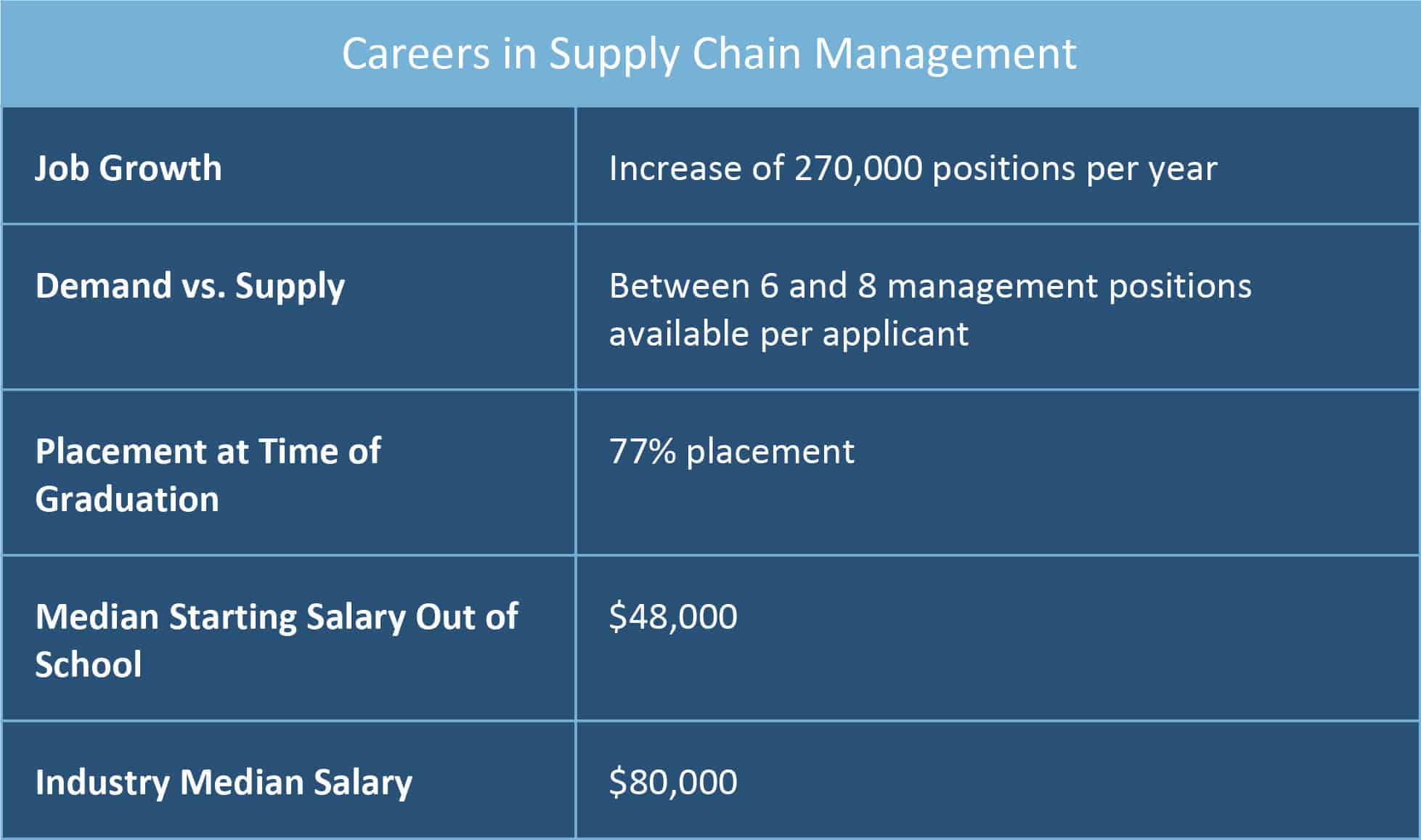
Career Paths
What kind of positions can you take on in supply chain management?
Supply Chain Business Analyst: Examine your company's workflow and come up with creative ways to streamline its business processes. Live and breathe efficiency.
Inventory Control Administrator: Ensure that inventory systems' data is accurate with physical inventory, troubleshoot discrepancies, discover root causes and interact with everyone related to this inventory.
Purchasing Specialist: Work out deals with suppliers and compare bids to minimize cost across the supply chain.
Procurement Manager: Research, evaluate, and purchase large quantities of products for companies to resell or use in operations. Determine what is in your company's store, ecommerce shops, and more.
Operations Analyst: Evaluate, report on, and improve the management of activities that generate recurring revenue for your organization, i.e. its core competencies.
Material Planning Manager: Plan, monitor, and manage products and the materials required to make them in your organization's manufacturing operations. You ensure the constant flow of materials so the factory never runs out.
Logistics Analyst: Evaluate and report on transportation of goods and services up and down your organization's supply chain, ensuring that everything gets where it needs to go and when it needs to get there.
Top Higher Education Programs
Supply chain management is a game with global stakes, as such major universities and academies around the world offer Bachelor's and Master's degrees in the subject. If you want to secure a job in the sector with a Fortune 500, becoming accredited in SCM is vital. Look at some of the top schools on this list for more details on breaking into the industry:
- Cambridge University
- Copenhagen Business School
- Cranfield School of Management
- Eindhoven University of Technology
- INSEAD
- London Business School
- MIT
- Rutgers
- Vlerick Business School
Certifications in Supply Chain Management
If a full Master's program seems like too big a commitment, explore some of the short-term certifications available below. They give you a shot at entry level jobs if you're inexperienced, and are a nice brush-up on current SCM standards for seasoned professionals.
- Chartered Institute of Supply Chain Management (CISCM) Chartered Supply Chain Management Professionals (CSCMP)
- Institute for Supply Management (ISM) Certified Professional in Supply Management (CPSM)
- Institute of Supply Chain Management (IOSCM)
- International Institute for Procurement and Market Research (IIPMR) Certified Supply Chain Specialist (CSCS), Certified Procurement Professional (CPP) and Certified Supply Chain Associate (CSCA)
- International Supply Chain Education Alliance (ISCEA) Certified Demand Driven Planner (CDDP) and Certified Supply Chain Manager (CSCM)
- Association (SCMA) Supply Chain Management Professional (SCMP)
- The Association for Operations Management (APICS) Certified Supply Chain Professional (CSCP) and Certified Production and Inventory Management (CPIM)
Supply Chain Management Templates
Outside of the physical work of checking inventory, or the personal work of communicating with different members of the supply chain's links, much of your work as a supply chain manager is using systems and dashboards to get an understanding of logistics, operations, and flows. What follows are some templates that can help manage and streamline workflow, while understanding and sharing inventory reports and more.
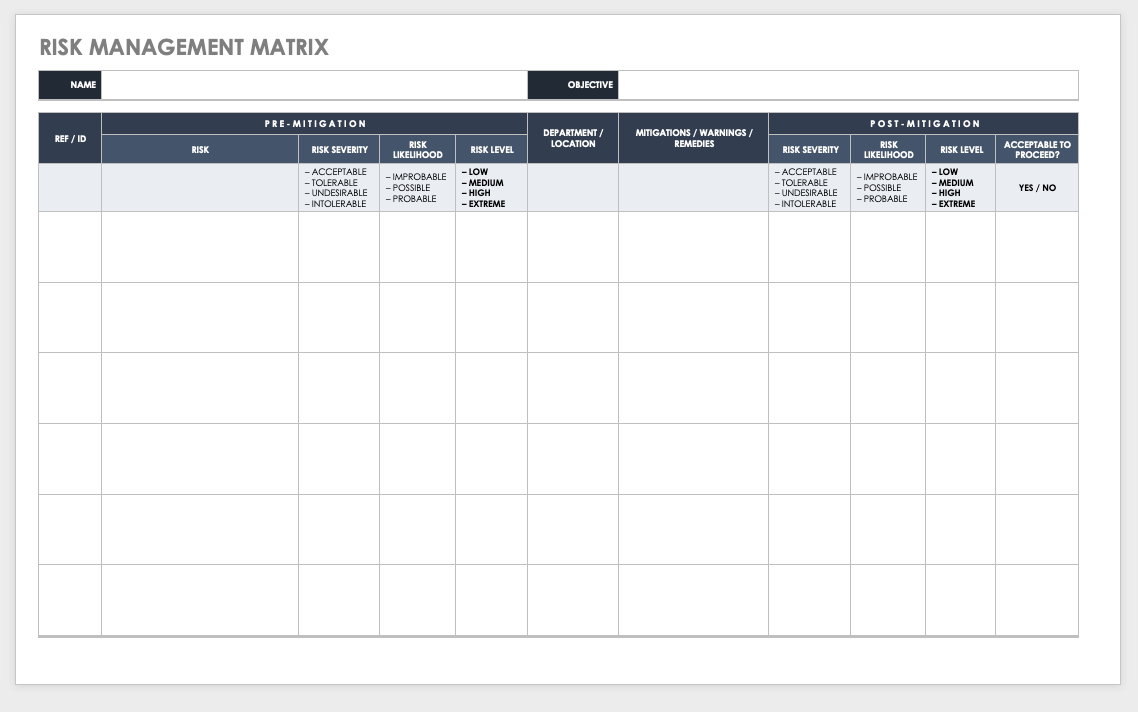
Download Risk Management Matrix Template
Excel | Word | PDF | Smartsheet
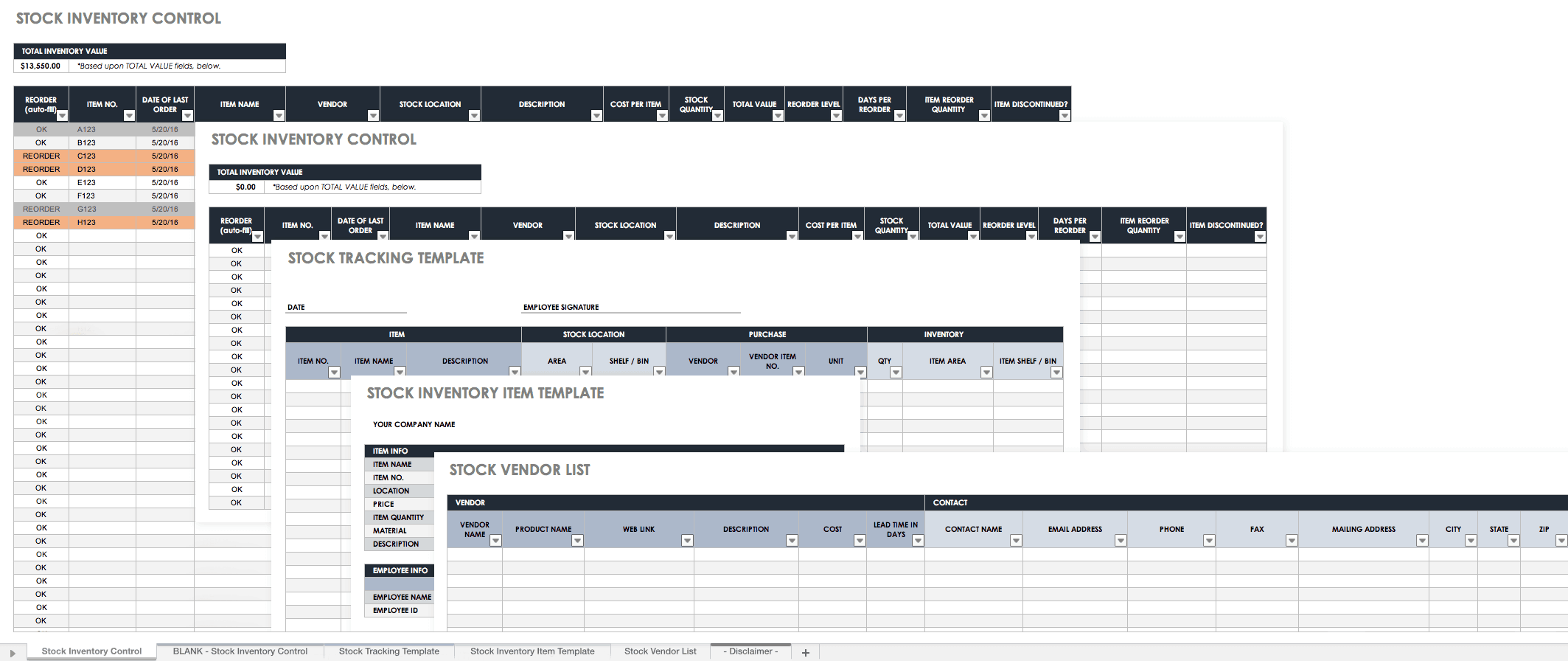
Download Stock Inventory Control Template
Excel | Smartsheet
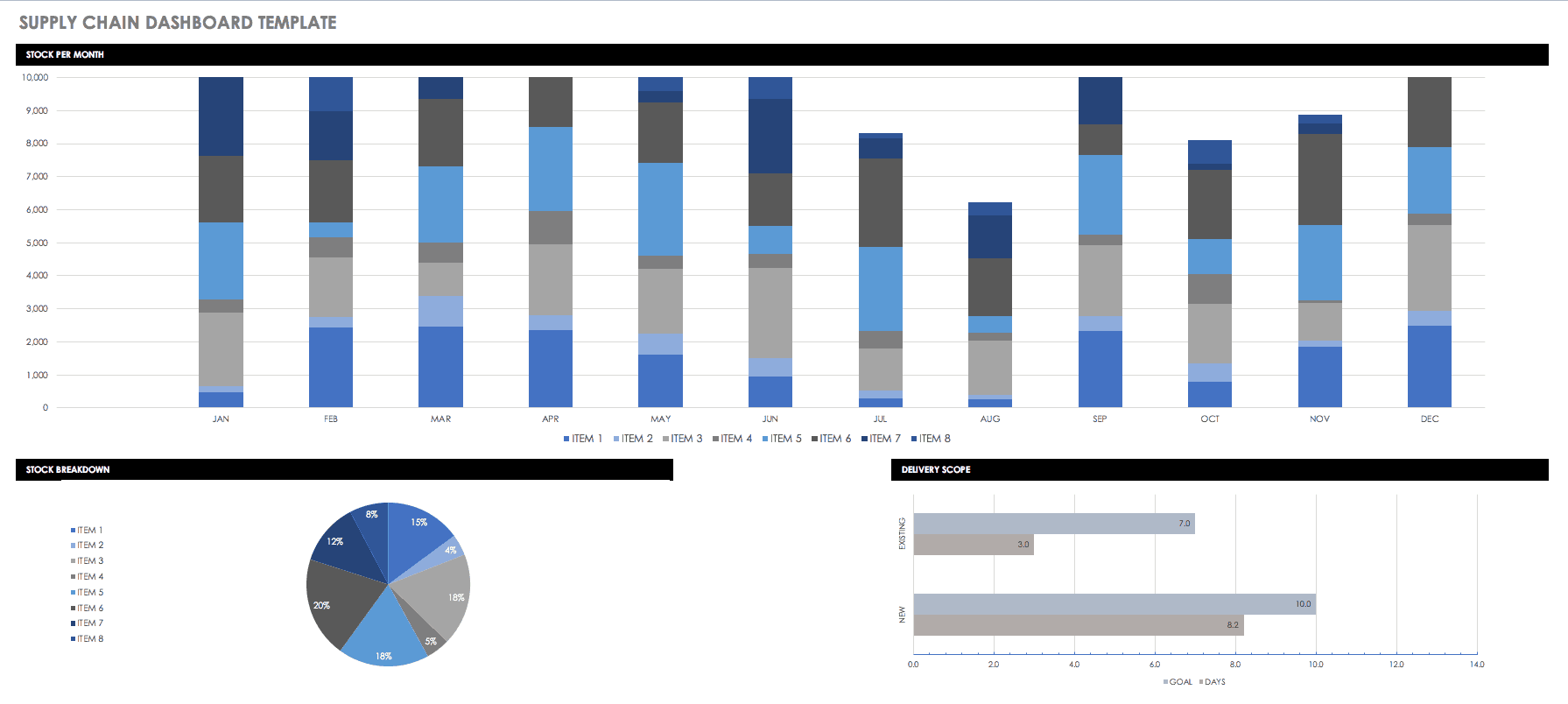
Download Supply Chain Dashboard Template
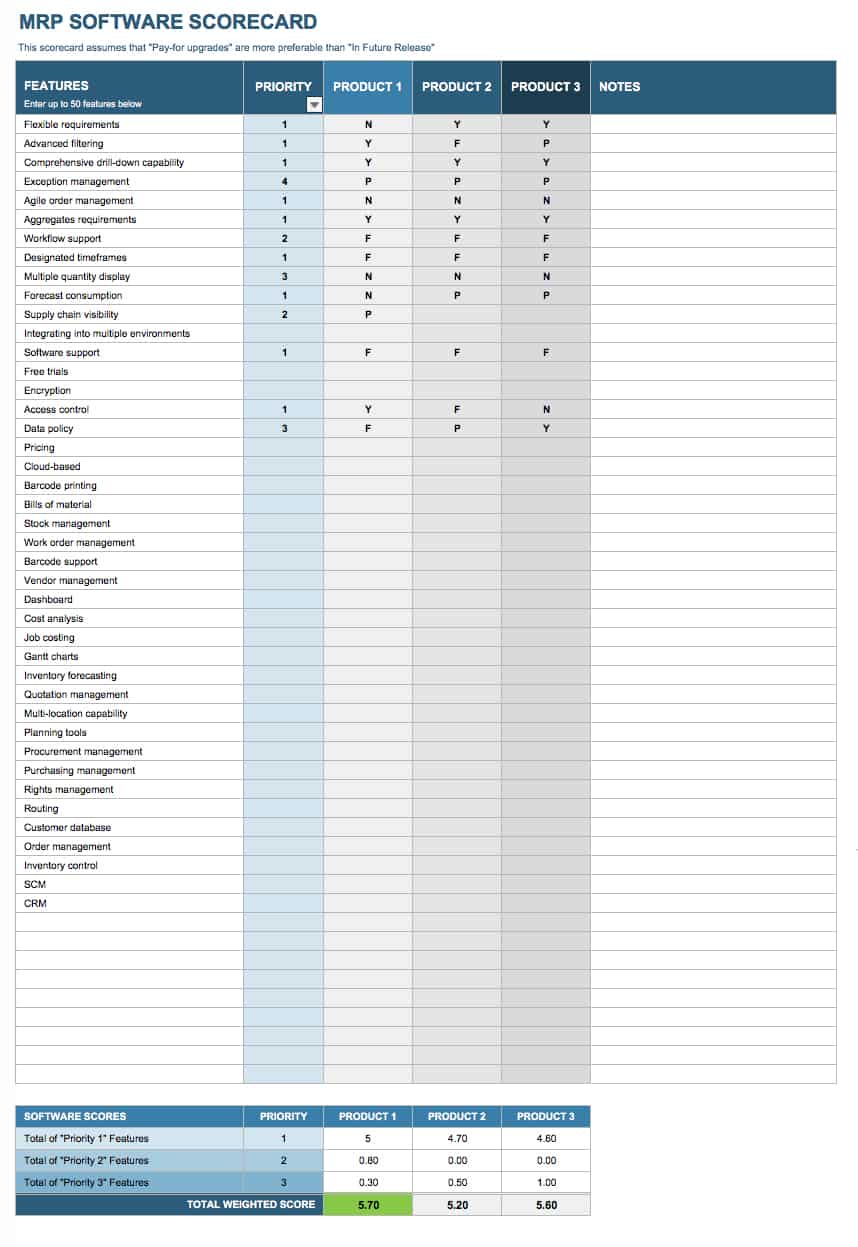
Download Microsoft Excel Template for Choosing MRP Software
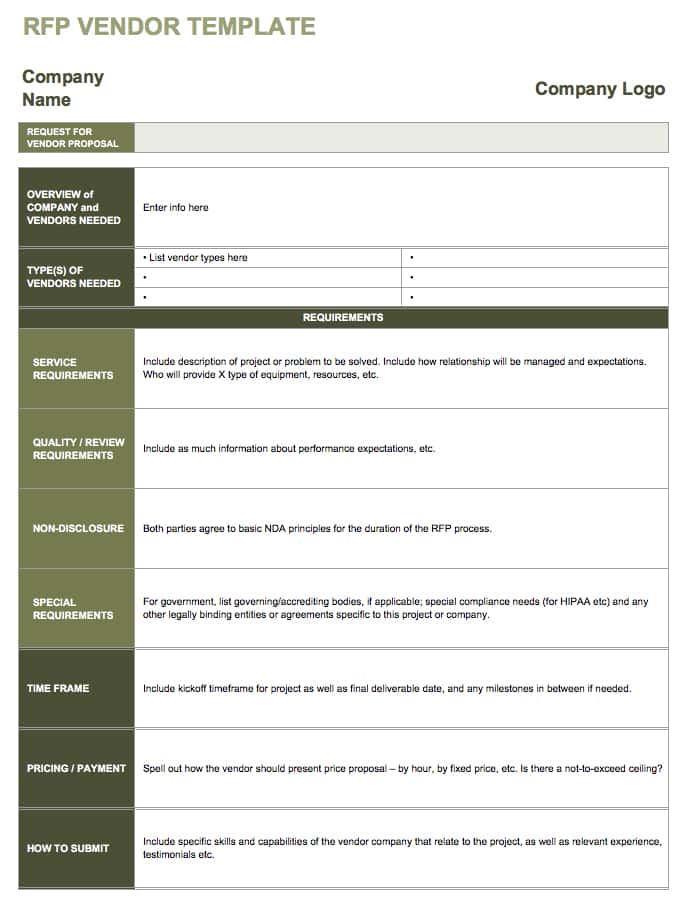
Download RFP Vendor Template
A Better Way to Manage Supply Chain & Manufacturing Operations
Empower your people to go above and beyond with a flexible platform designed to match the needs of your team — and adapt as those needs change.
The Smartsheet platform makes it easy to plan, capture, manage, and report on work from anywhere, helping your team be more effective and get more done. Report on key metrics and get real-time visibility into work as it happens with roll-up reports, dashboards, and automated workflows built to keep your team connected and informed.
When teams have clarity into the work getting done, there's no telling how much more they can accomplish in the same amount of time. Try Smartsheet for free, today.
Posted by: benitoquinleye0199281.blogspot.com
Source: https://www.smartsheet.com/supply-chain-management
Post a Comment for "Supply Chain Management Notes Pdf Download"